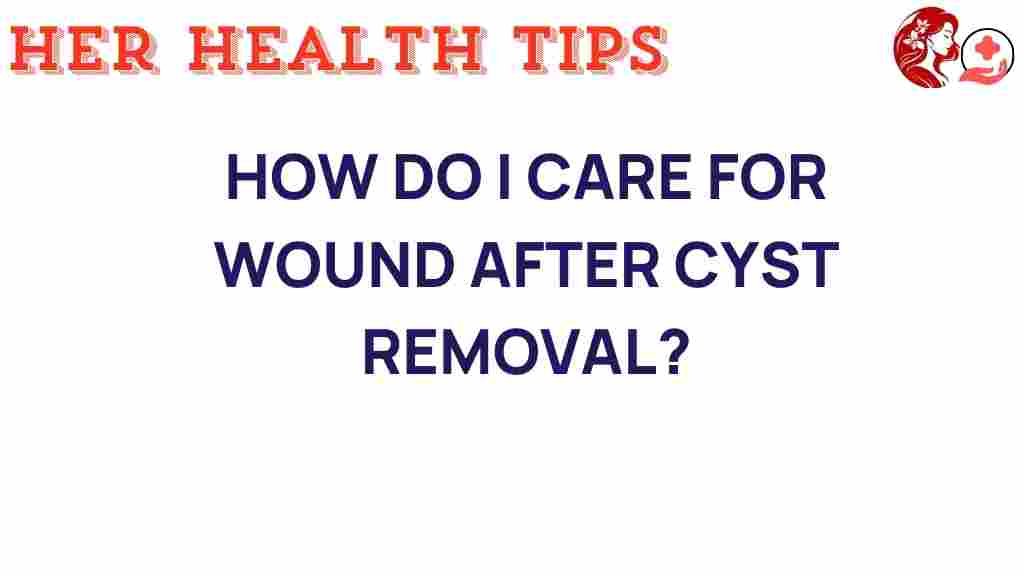Essential Tips for Wound Care After Cyst Removal
Undergoing a cyst removal procedure is a common surgical intervention that can lead to significant improvements in skin health and overall well-being. However, the post-operative care you provide to the surgical site is crucial for a smooth healing process and optimal patient recovery. This article will delve into essential tips for effective wound care after cyst removal, focusing on infection prevention and enhancing the healing process.
Understanding the Healing Process
After cyst removal, the body begins its healing process, which typically involves several stages:
- Hemostasis: This initial stage occurs immediately after surgery, where the body works to stop any bleeding.
- Inflammation: Following hemostasis, the area may become red, swollen, and tender as white blood cells work to prevent infection.
- Proliferation: New tissue begins to form, and the wound starts to close. This stage can take several days to weeks.
- Maturation: The final stage can last for months to years, where the skin regains strength and elasticity.
Understanding this process is vital for implementing effective wound care and ensuring a successful recovery.
Essential Wound Care Tips
Proper wound care after cyst removal can significantly affect the healing process. Here are some essential tips:
- Keep the Surgical Site Clean: Gently clean the area with mild soap and water. Avoid using alcohol or hydrogen peroxide, as these can irritate the skin.
- Apply a Sterile Bandage: Cover the wound with a sterile bandage to protect it from dirt and bacteria.
- Change Dressings Regularly: Replace the bandage as instructed by your healthcare provider, typically every one to two days or when it becomes wet or dirty.
- Monitor for Signs of Infection: Watch for redness, swelling, increased pain, or discharge from the wound. If these symptoms occur, contact your healthcare provider immediately.
- Avoid Picking at the Wound: Refrain from touching or picking at the surgical site to prevent disruption of the healing process.
Managing Pain and Discomfort
It is normal to experience some pain and discomfort after cyst removal. Here are some tips to manage this:
- Follow Pain Management Instructions: Take prescribed medications as directed to manage pain effectively.
- Use Ice Packs: Applying ice packs to the area can help reduce swelling and numb discomfort.
- Rest and Relax: Ensure you get plenty of rest to aid recovery. Avoid strenuous activities that could strain the surgical site.
Diet and Hydration for Healing
Your diet plays a significant role in the healing process. Focus on the following:
- Stay Hydrated: Drink plenty of water to help your body heal.
- Eat Nutrient-Rich Foods: Include fruits, vegetables, lean proteins, and whole grains in your diet to support skin health and recovery.
- Avoid Alcohol and Smoking: These can hinder the healing process and increase the risk of complications.
Follow-Up Appointments
After your cyst removal, it is essential to attend all follow-up appointments. During these visits, your healthcare provider will:
- Assess the healing progress of the surgical site.
- Remove stitches or staples if necessary.
- Address any concerns or complications that may arise.
When to Seek Medical Attention
While some discomfort is expected, certain signs indicate you should seek medical attention:
- Excessive bleeding or drainage from the wound.
- Fever over 101°F (38.3°C).
- Severe pain that is not alleviated by medication.
- Signs of infection at the site (increased redness, warmth, or swelling).
If you experience any of these symptoms, do not hesitate to contact your healthcare provider for guidance.
Common Troubleshooting Tips
Even with diligent care, you may encounter issues during the healing process. Here are troubleshooting tips for common concerns:
1. Persistent Redness or Swelling
If the area remains red or swollen after a few days:
- Ensure you are keeping the area clean and dry.
- Consult your healthcare provider if symptoms persist.
2. Wound Not Closing
If the wound appears to be slow in closing:
- Ensure you are eating a balanced diet rich in vitamins and minerals.
- Consult with your provider to rule out any underlying issues.
3. Increased Pain
If pain levels increase rather than decrease:
- Reassess your pain management strategies; you may need a reassessment of your medications.
- Contact your healthcare provider for further evaluation.
Maintaining Skin Health Post-Operatively
Maintaining skin health after cyst removal is vital not only for the healing process but also for preventing future cysts or skin issues. Here are some tips:
- Moisturize the Area: Once the wound has healed, use a gentle moisturizer to keep the skin hydrated.
- Use Sunscreen: Protect the healing skin from sun exposure to prevent discoloration.
- Keep the Skin Clean: Continue a regular skincare routine to promote overall skin health.
Conclusion
Wound care after cyst removal is critical for ensuring a smooth and successful healing process. By adhering to these essential tips, you can support your body’s natural recovery, minimize the risk of infection, and maintain optimal skin health. Remember, always consult with your healthcare provider for personalized advice and to address any concerns during your recovery.
For more information on wound care and recovery, you can visit this resource. If you have any lingering questions, don’t hesitate to reach out to your healthcare professional. Your health and recovery are paramount.
This article is in the category Conditions and created by HerHealthTips Team
